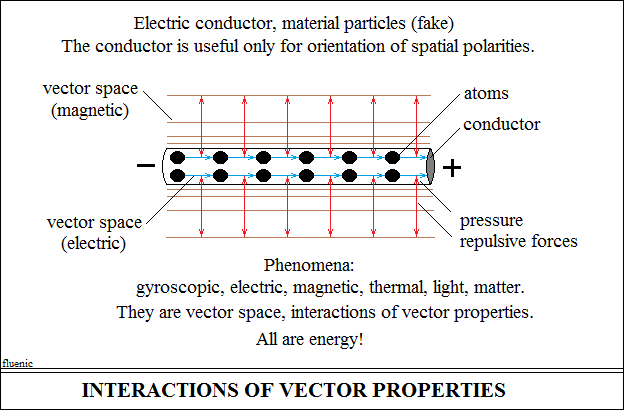Inertial movement.
The interpretation of physical processes through the interactions of vectorial
properties cannot be a philosophical concept or a scientific theory, it
can
rather be an serendipitous discovery of their use in understanding the
secrets
of nature. Inertial motion is the interaction of vector space with the
vector
structures of moving bodies. The body, being a structure of the interaction
of
vector properties, of energy, orients collinearly the polarities of the
vector
space, in parallel lines on the direction of movement. Zeno's arguments
were
space, unity and the illusion of movement. The propagation of the space
wave justifies the ancient interpretation, obviously, if other space interactions
do not intervene, as is the case with the systems in the universe.
The gyroscopic phenomenon.
Each point on the surfaces of the rotating disc, orients open polarizations
in the
vector space, in the direction of their tangents. The tangent polarizations,
effects
of the rotation of the disk, repel each other and produce centrifugal
force.
The tangents produced from reduced radii towards the center of rotation,
take radial directions. Their repulsive forces are vector space interactions,
they
are energy, and energy is the fundamental form of nature's existence.
The surfaces of the rotating disc are therefore caught between two opposite
forces of the vector space, centripetal forces, the recoil of the centrifugal
force, which compresses the disc, producing the gyroscopic phenomenon.
The earth is in the same state, with the difference that the repulsive
forces are
the closed magnetic circuits and the compression is centripetal. So, the
centripetal force derives from the repulsive forces and can be considered
a wave, which propagates opposite to those in the liquid medium.
Although the force is repulsive, Newton saw an attractive force, and now
it
turns out to be a compressive force. The configuration of the vector space
on the surface of the rotating disc, connects the orientation of the vector
polarities, generates the gyroscopic phenomenon, but also generates
the radial electric potential, in the case of Faraday's disc.
And the earth has rotation and radial electric potential.


